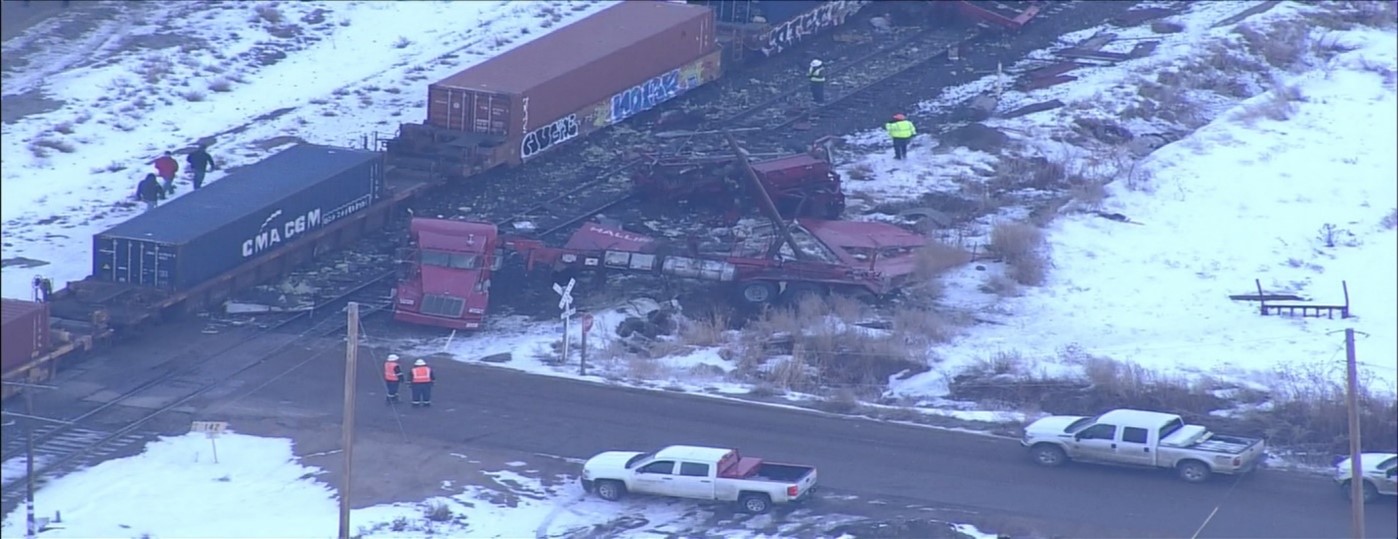Are a few seconds worth your life? Stop! Trains Can’t.

Railroad crossing Safety.
The devastation in losing a loved one, due to an accident involving a train is not unheard of. I personally have a friend that was impacted by losing two of her sisters in a train accident. Every day we put our lives at risk, and we do not realize how safety can make an impact on someone’s life if we are not cautious and aware of our surrounding. Taking a few seconds to stop and look both ways, can save a life.
According to the Federal Railroad Administration, there are thousands of collisions between trains and vehicles every year. These collisions can result in injuries – or even death.
Some known causes of why accident with trains occur:
- Negligence is the leading cause of train derailments and accidents. The burden of this can fall on many parties, including the railway company, conductors, or employees. Railroad crossings with broken crossing arms account for some accidents that can be fatal. Overall, these issues come from outdated technologies. Other times, conductors could forget to turn on the signal warning.
- Human error: Inexperienced conductors and their long work hours that leave them fatigued, which can lead to poor judgment. Another common form of human error is construction near rail lines. Mishandling heavy equipment, such as cranes, can cause operators to tip or spill the load onto the tracks causing a train accident.
- Reckless pedestrians and drivers: When these people are not aware of their surroundings, they often ignore or fail to see the rail crossings coming down. Even worse, some drivers or pedestrians attempt to outrun the railroad crossings and cross the tracks.
- Speeding trains: trains will operate at speeds exceeding the normal capacity. This might be due to rushed delivery or transportation hours and high stress on conductors. Which can cause a train accident. Property damage, loss of goods, serious injury, and death can all happen when a freight or passenger train travels at unsafe speeds.
It is your responsibility to be safe. No matter what, you cannot outrun a train!!
Safety Tips for Drivers
- Approach the tracks cautiously, and always expect a train – even on rarely used tracks. Since most trains do not travel on a regular schedule, be cautious any time of the day or night.
- Turn on your four-way flashers to warn other drivers that you are slowing down.
- Turn off any fans and music and roll down your windows as you come to the track. Try to come to a complete stop between 15 and 50 feet away.
- Cross tracks only at designated crossings. Never drive around lowered gates. This is illegal and deadly.
- Once you are stopped, listen for a train and look both ways down the track. Be mindful that your mirrors or A-pillars may be blocking your view so adjust your body to see around them. Listen for any signs of a train even if you cannot see one. If you do not see or hear anything, look again and proceed. Use the highest gear without having to shift to get across.
- If you are crossing the tracks and you see a train coming, keep going. Do not panic and stop on the tracks. Remember, the train is at least three feet wider than the tracks on each side.
- If you see a train, understand that it is closer and moving faster than you think. Always wait for it to pass before proceeding across the tracks.
What if You Get Stuck?
If your vehicle stalls or gets stuck on the tracks, do the following:
- Get yourself and any other passengers out of the vehicle immediately.
- If a train is coming, get out immediately and move quickly toward the oncoming train and away from the tracks at a 45-degree angle. This is to protect you if the train does hit your vehicle. The debris will fly in the same direction as the train’s path.
- If you are at a crossing with multiple tracks, watch in either direction for another train approaching.
- Once you are far enough away from the tracks, call for help and provide your location and the crossing number if it is posted.
- Look for the sign with the blue background, it will have the telephone number for the railroad that operates over the crossing, along with the US DOT number (six numbers and a letter) for that specific crossing. That DOT# identifies the crossing’s address. You dial the number on the sign and reference this number if you needed to notify the railroad of an emergency.
Remember, trains cannot stop quickly. A train traveling at 60 mph will need at least one mile to stop, so even if the train driver sees you, it is not likely that they will be able to stop in time. A train’s width is also larger than the rails by at least three feet on each side. This could clip your cargo, vehicle or overhang if you attempt to cross without enough room.
For some helpful resources on train safety, check out these websites:
https://www.nhtsa.gov/campaign/railroad-crossing
https://truenorthcompanies.com/blog/transportation/railroad-crossing-safety.aspx
https://www.fmcsa.dot.gov/safety/rail-crossing/7-steps-safety-highway-rail-grade-crossings



